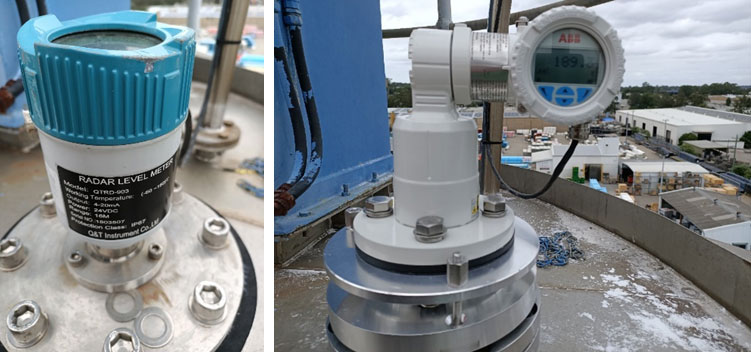LT100 application in the measuring and control of powder in silos.
 ABB’s LT100 laser level transmitter is offered by IPD as an optimal solution for level measurement in industrial applications. This level measurement tool utilises a laser to measure the distance between the sensor and the target to provide accurate and reliable measurements. LLT100 is designed to be used in harsh environments, and it is resistant to dust and humidity and has a measurement range of up to 100 metres. This easy-to-install laser level transmitter provides the user with meaningful level measurement data, ensuring their processes are running safely, efficiently and without bottlenecks. ABB’s LT100 laser level transmitter is offered by IPD as an optimal solution for level measurement in industrial applications. This level measurement tool utilises a laser to measure the distance between the sensor and the target to provide accurate and reliable measurements. LLT100 is designed to be used in harsh environments, and it is resistant to dust and humidity and has a measurement range of up to 100 metres. This easy-to-install laser level transmitter provides the user with meaningful level measurement data, ensuring their processes are running safely, efficiently and without bottlenecks.
In recent time, a confidential IPD customer had experienced issues with their existing measuring system that utilised the use of radar and ultrasonic sensors to detect the level of plastic powder in their silo tanks. After reaching out to the IPD team, we worked with the customer to replace their existing sensors with the LLT100 laser level transmitters as the recommended solution, which included an adaptor kit to work out current flanges, a dust tube and a swivel flange. The LLT100 facilitated an accurate detection of bulk solids in their silo tanks, allowing the customer to improve site efficiency and reduce the total cost of ownership. As a result, two LLT100 laser level transmitters were installed with two oscillating sensors to detect full and empty tanks as an additional safety precaution. The customer was satisfied with the outcome after using the LLT100, rolling out another twenty-four LLT100 laser units for their silo tanks across various sites.
The successful implementation of ABB’s LLT100 laser level transmitter, has demonstrated the reliability of this level measurement solution. By leveraging cutting-edge laser technology, our customer was able to enhance site operations and reduce costs. IPD is committed to providing continuous support and service to assist this particular and all our valued customers with maintaining and improving their inventory level management systems.

|